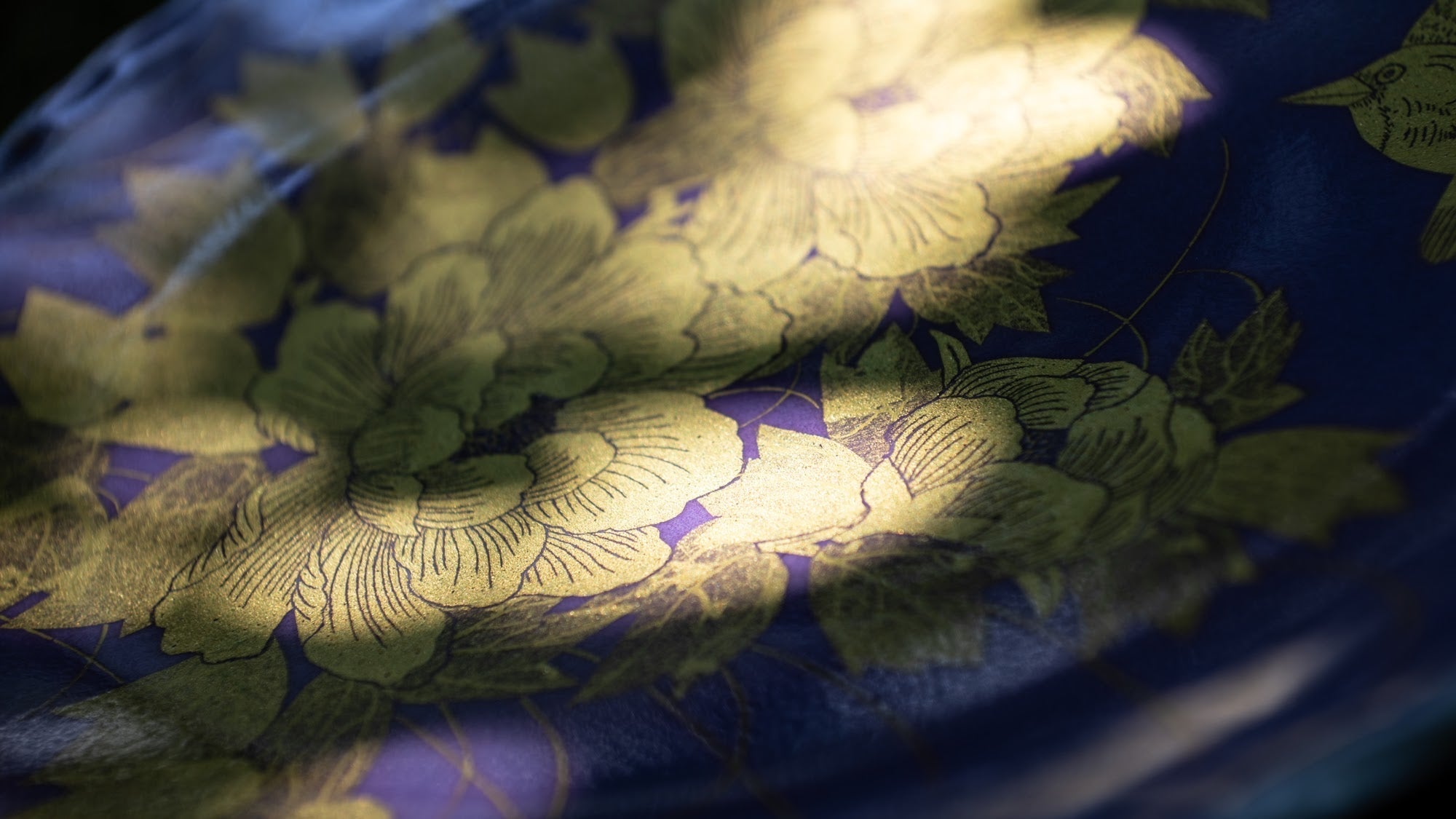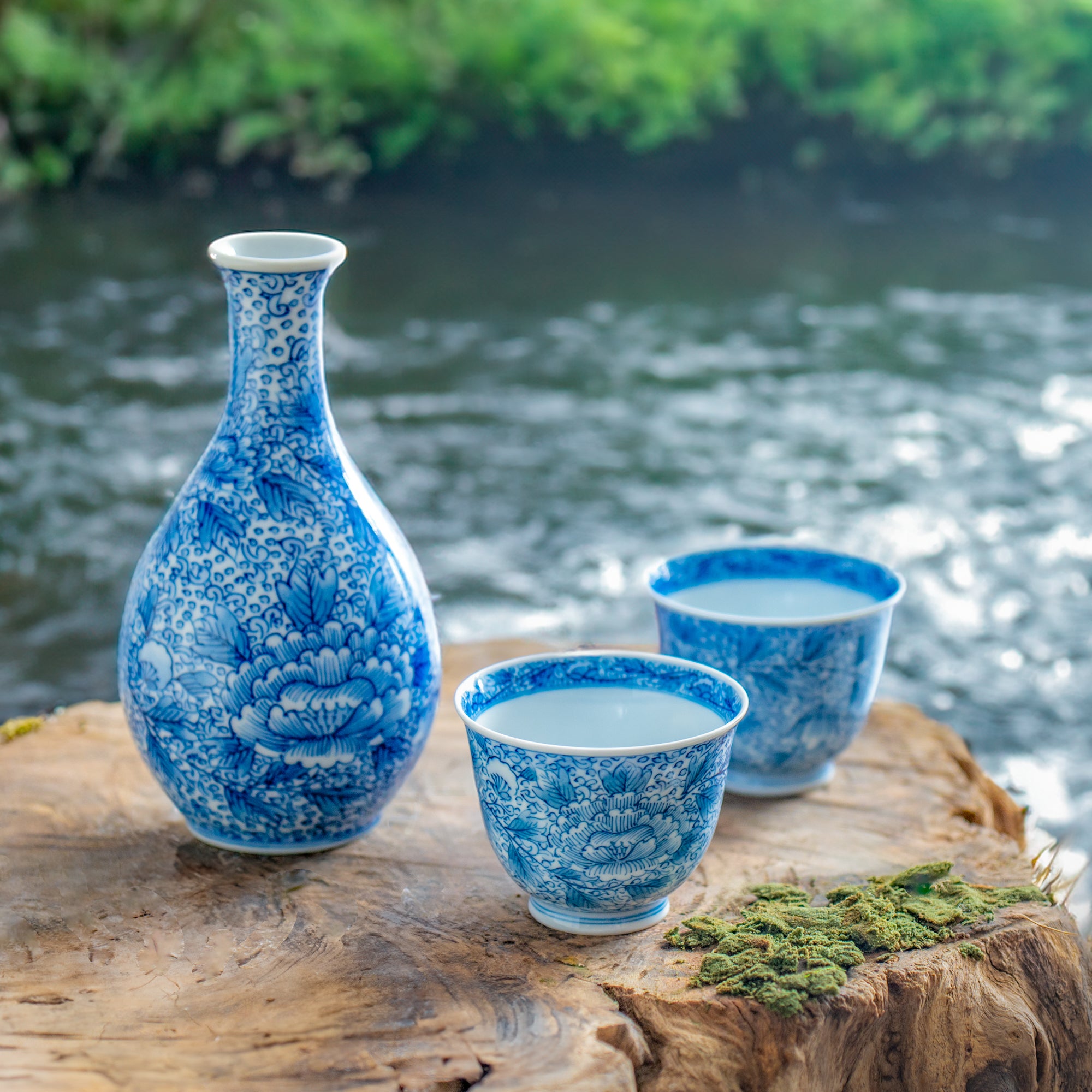
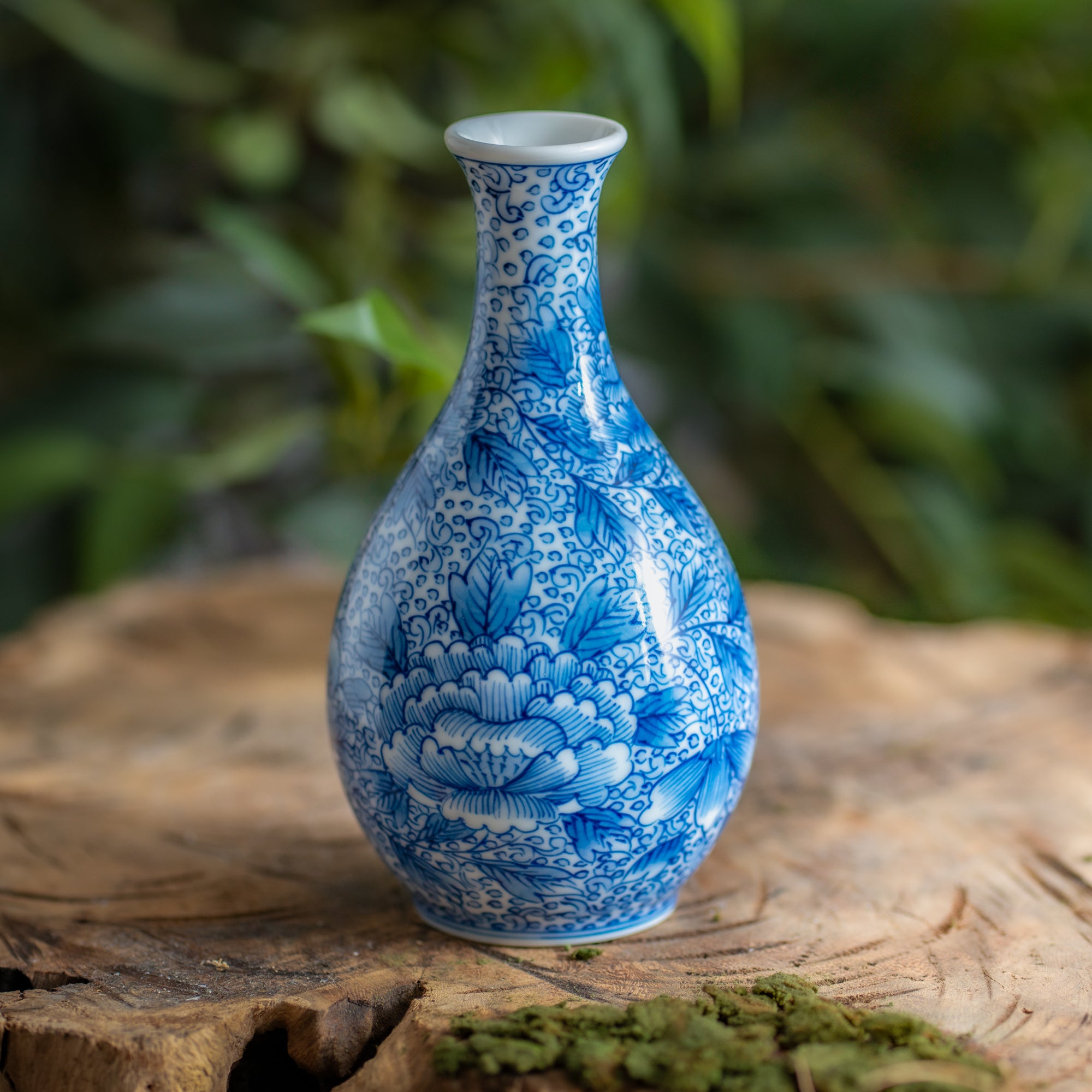
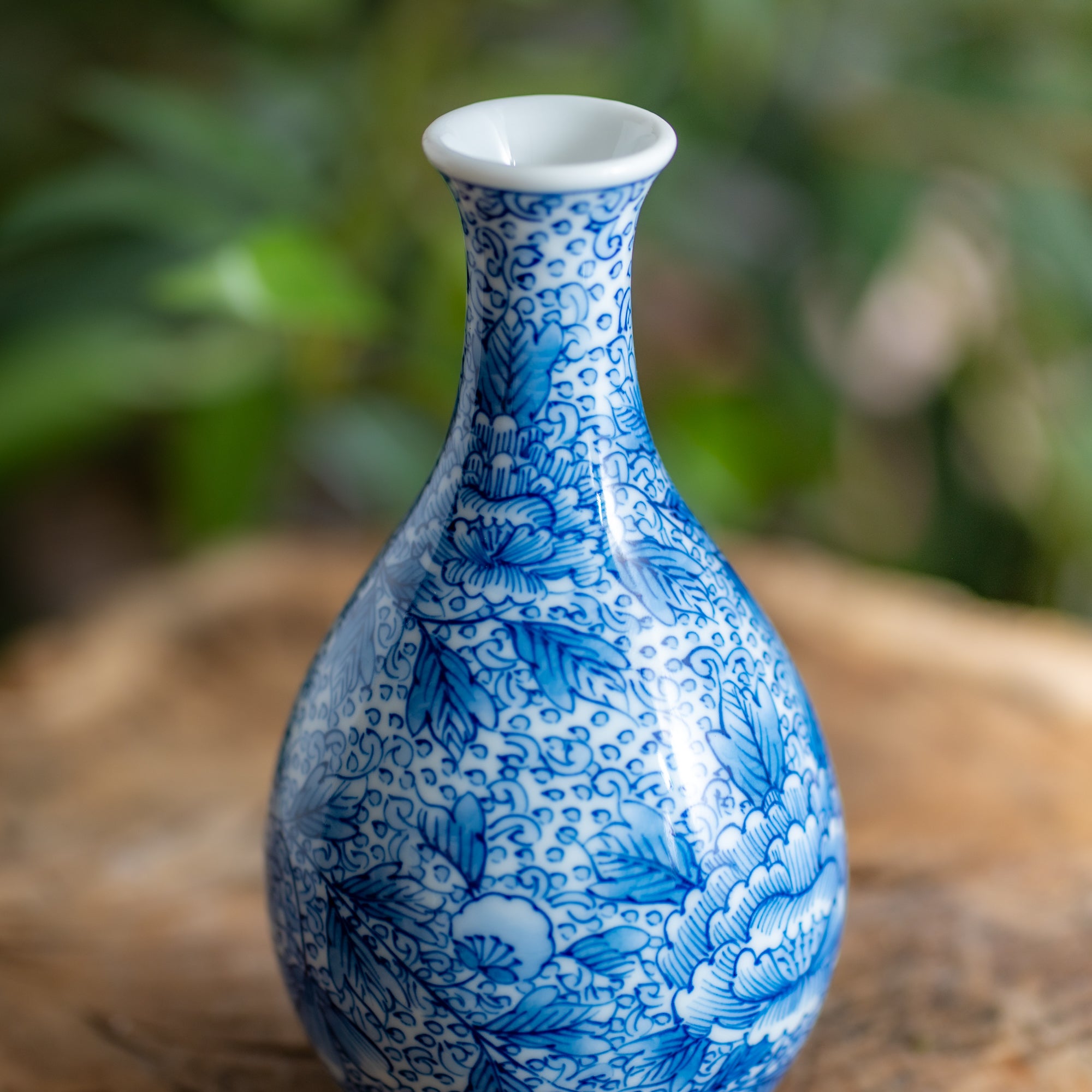
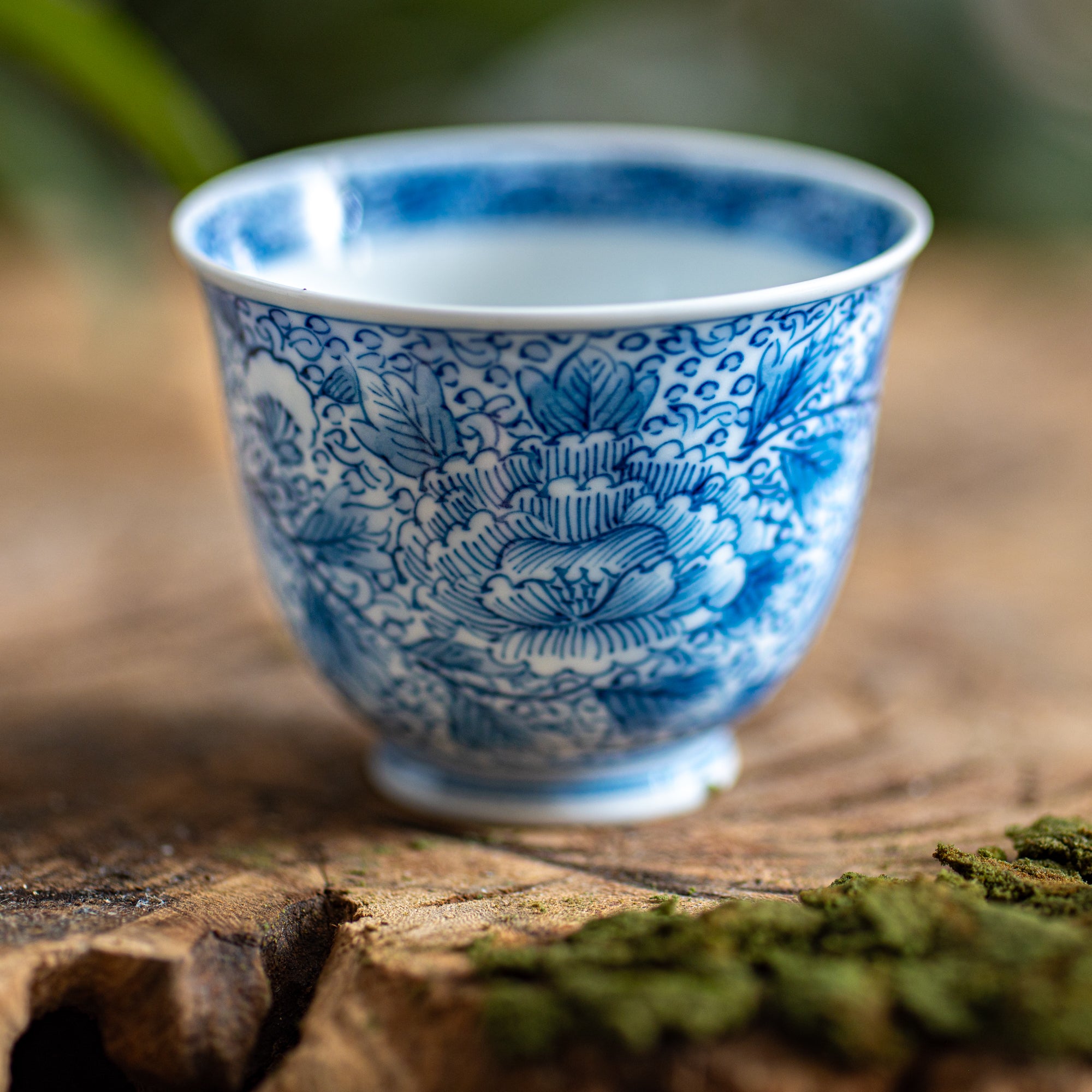
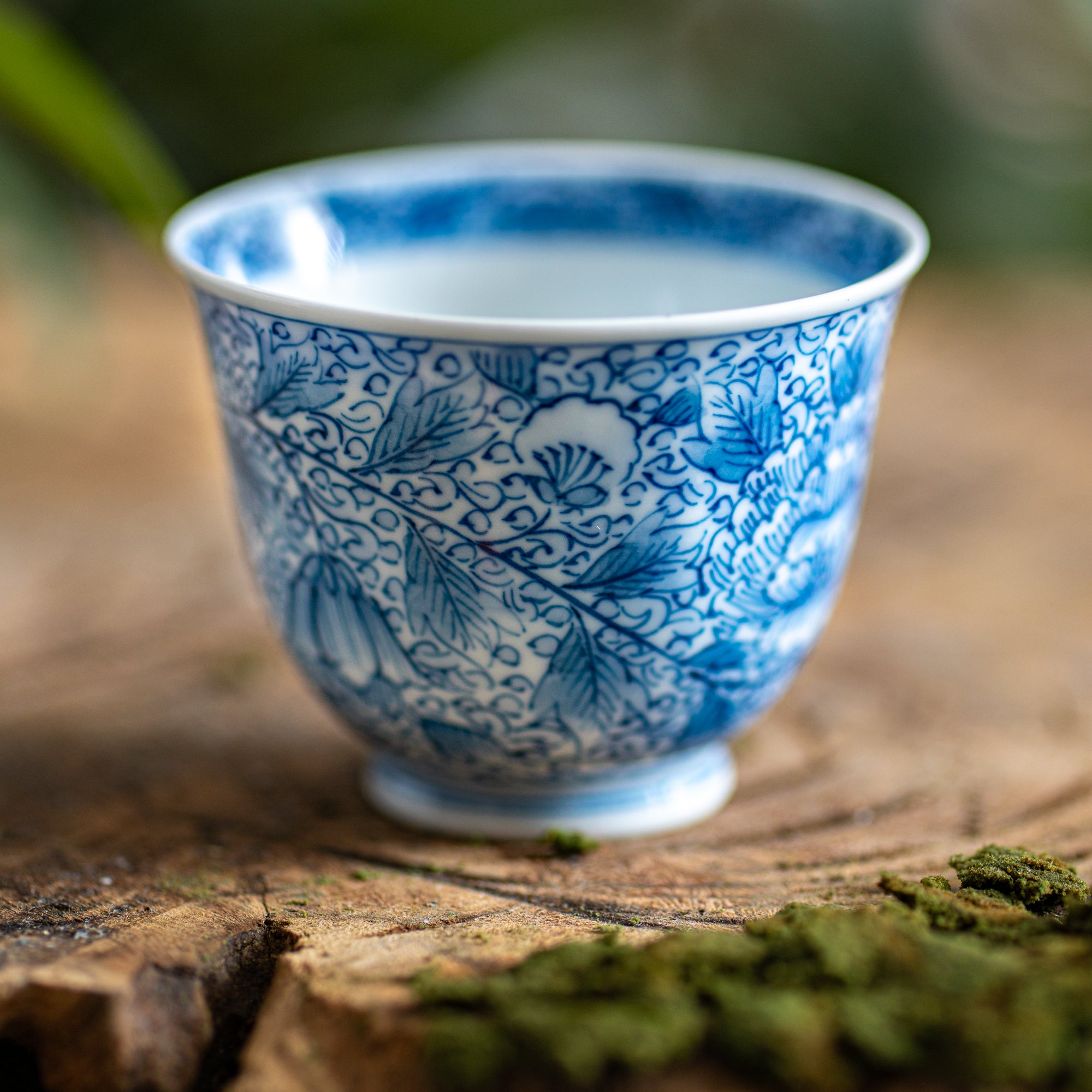
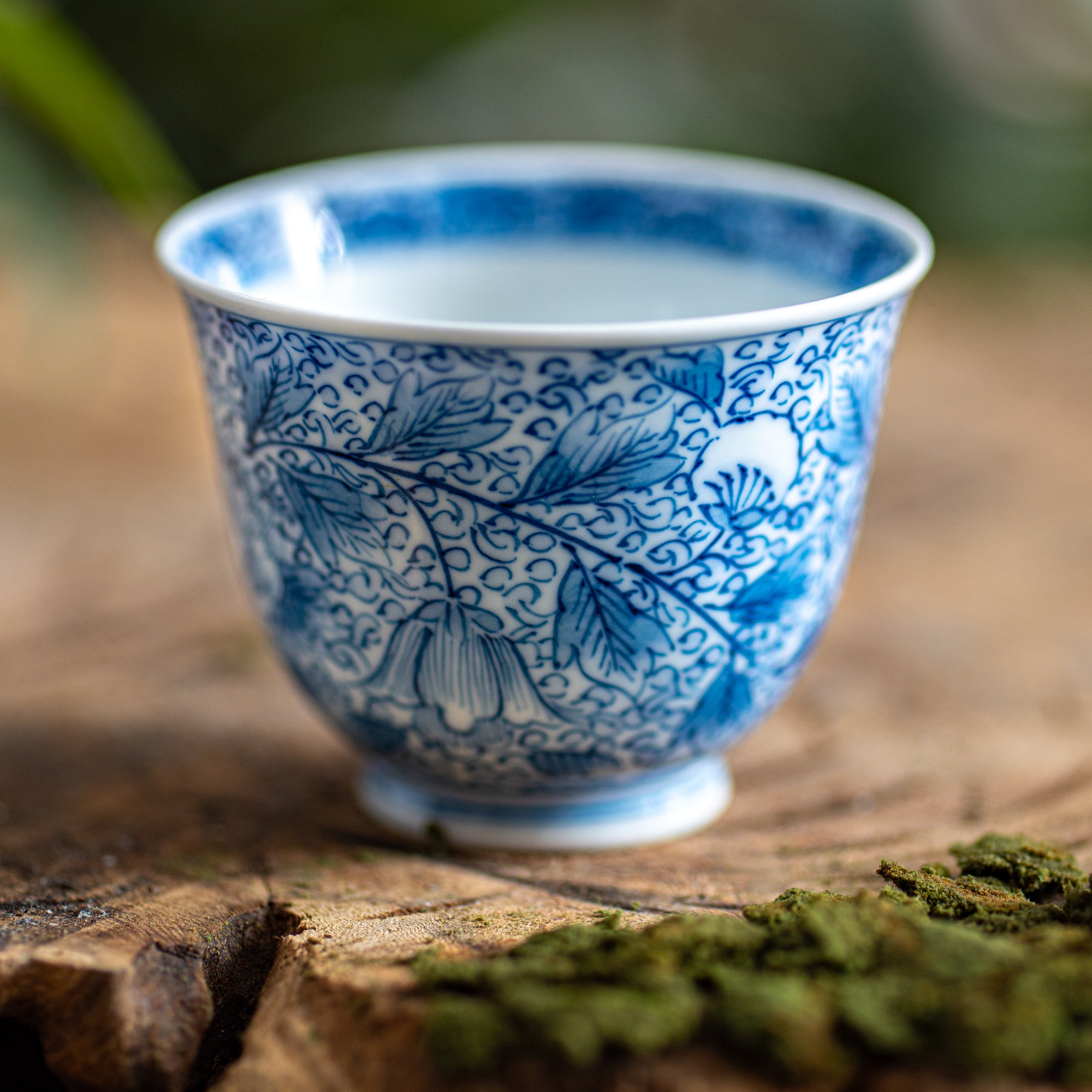
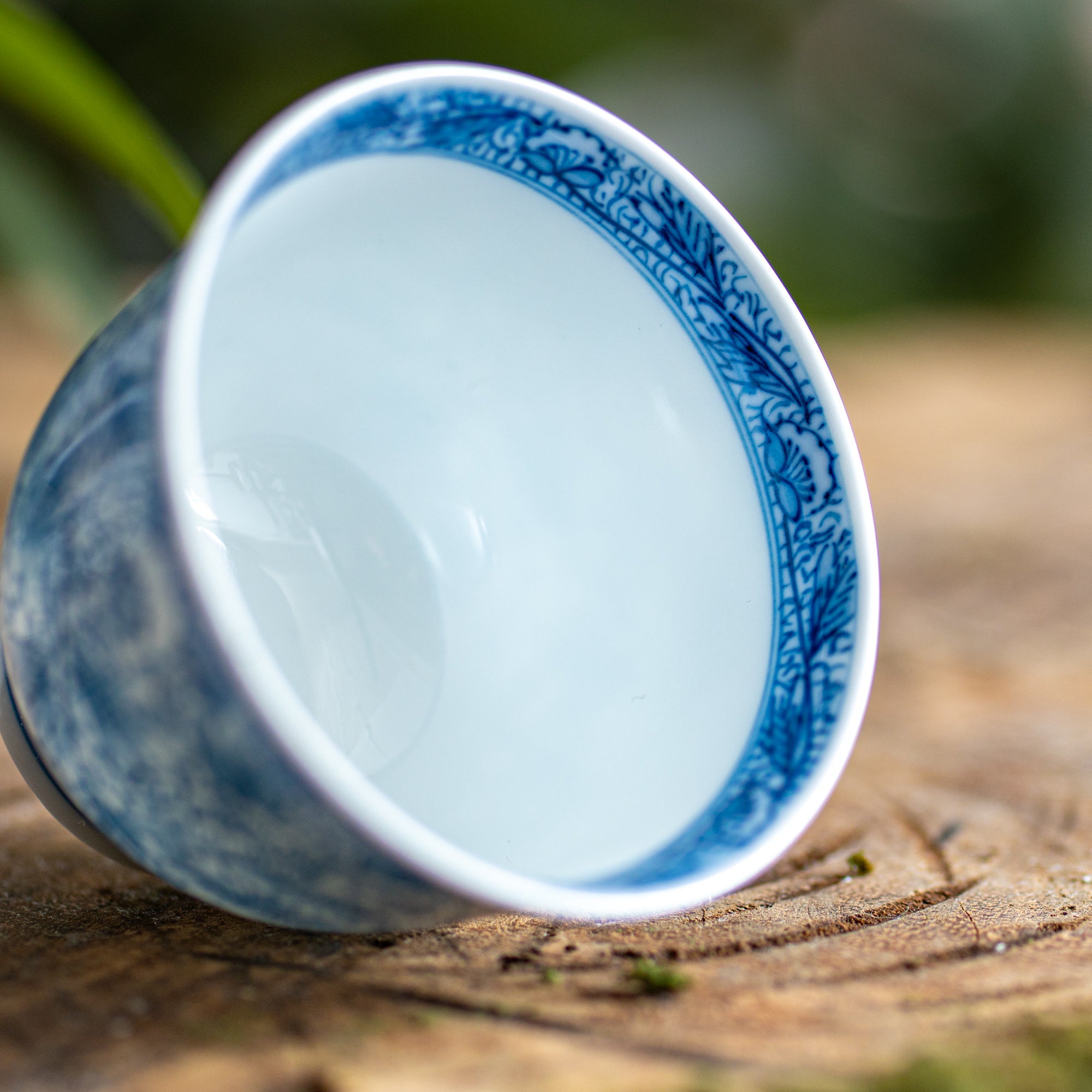
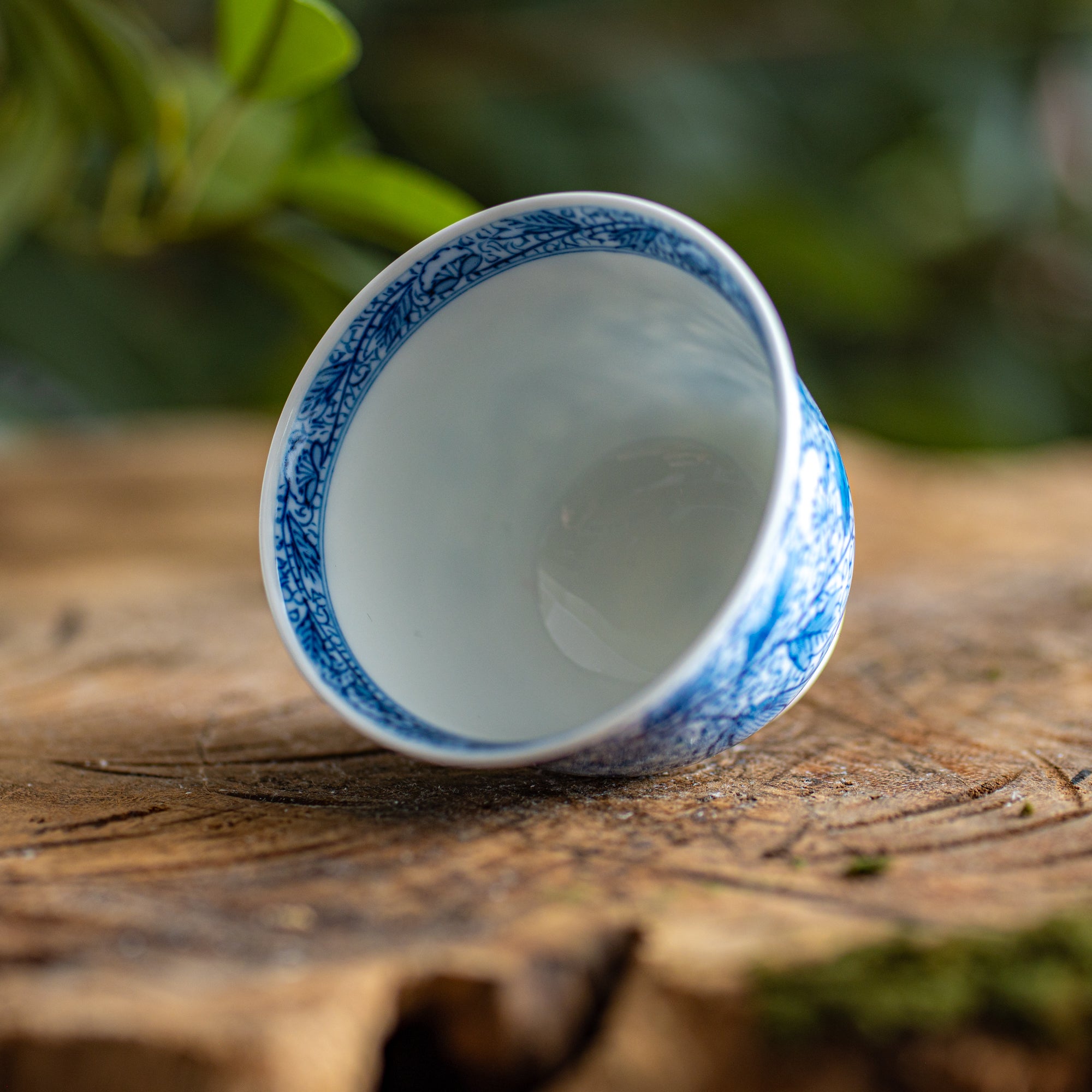
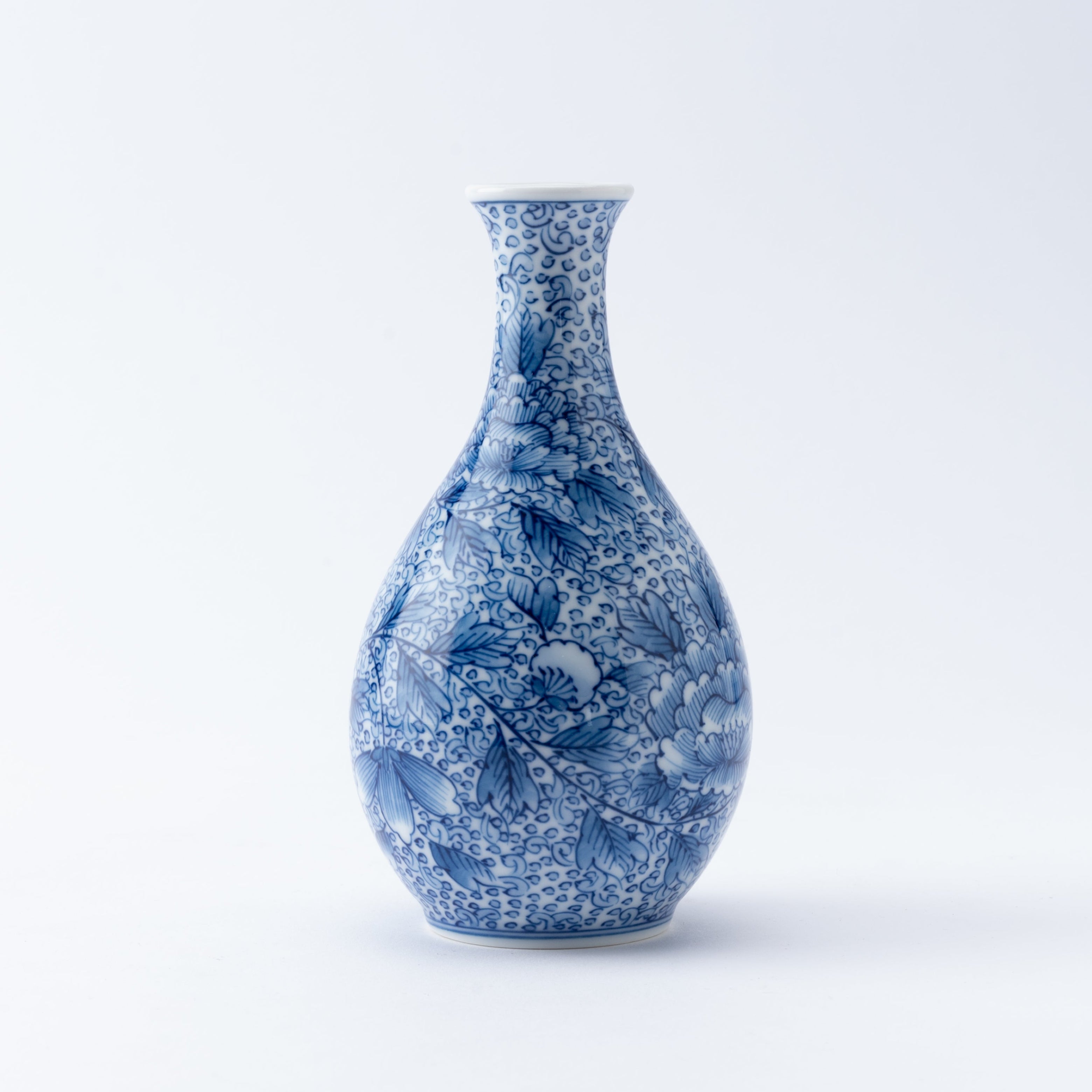
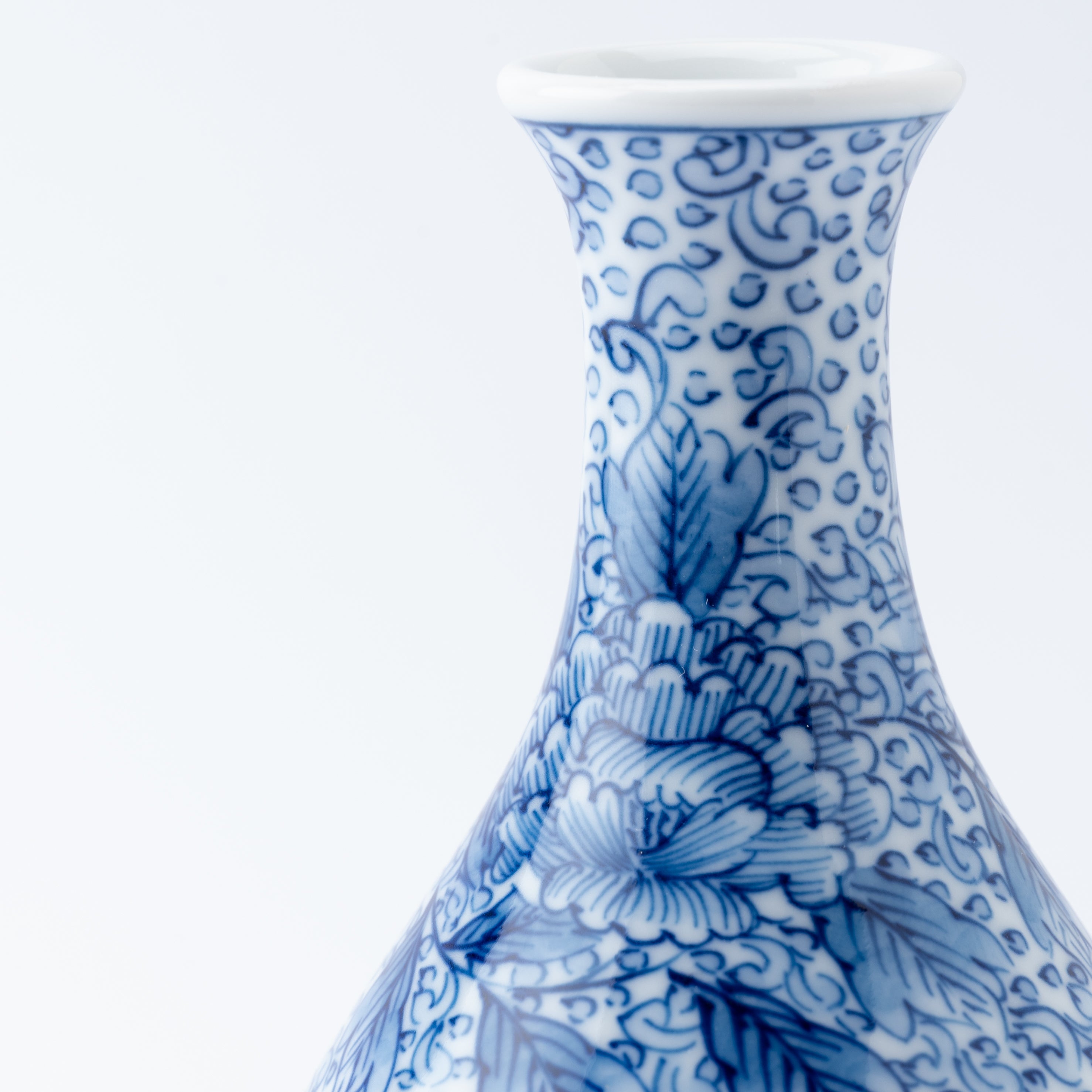
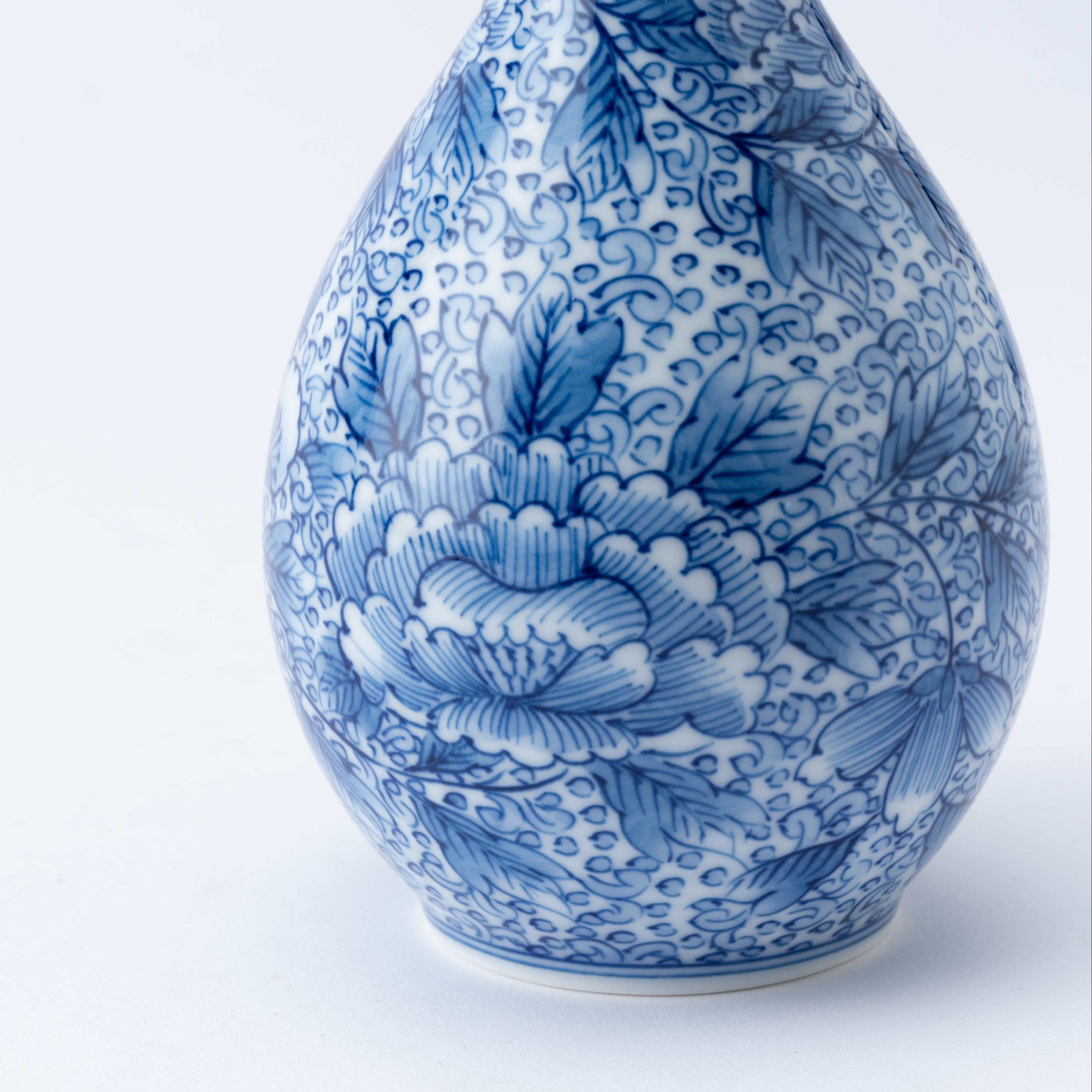

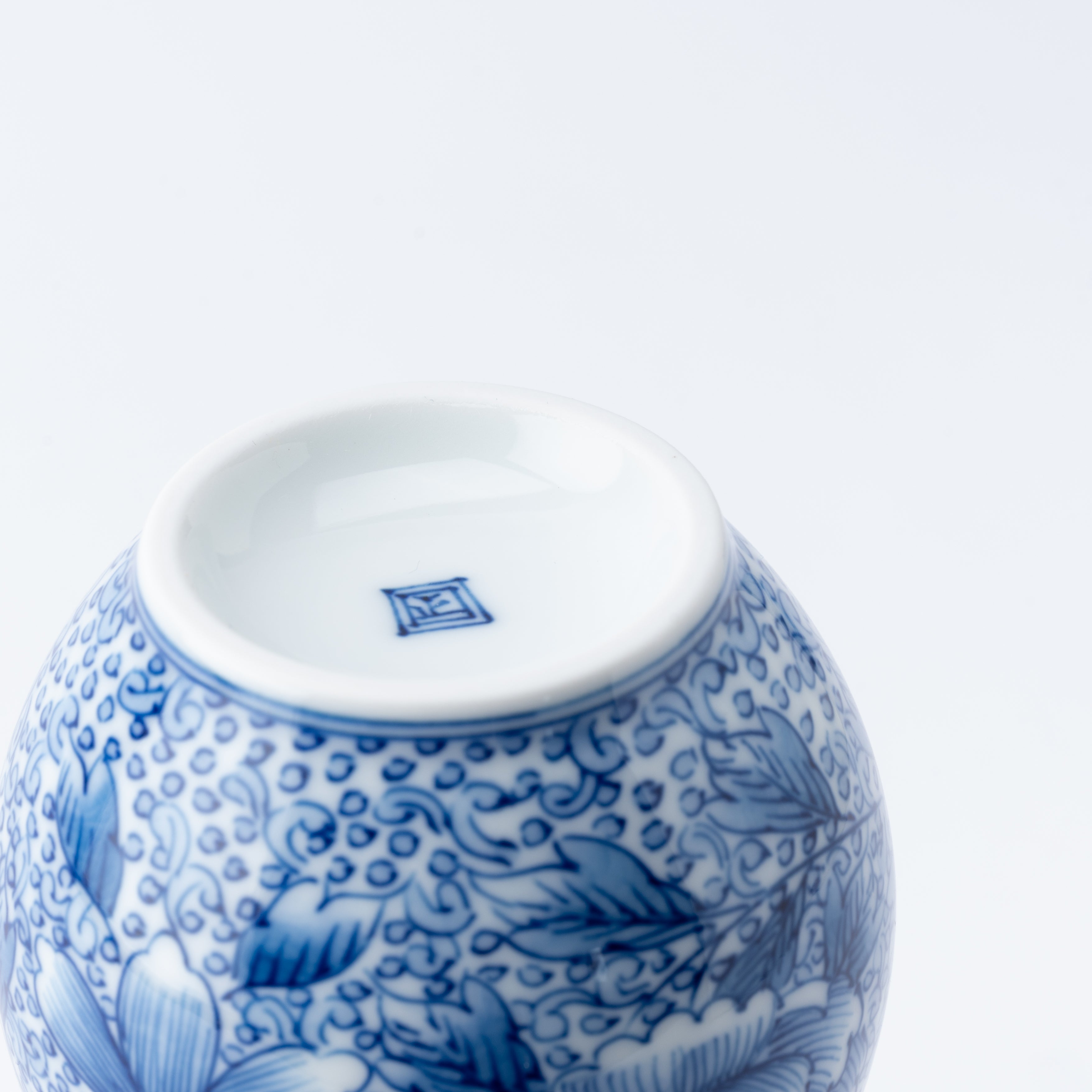
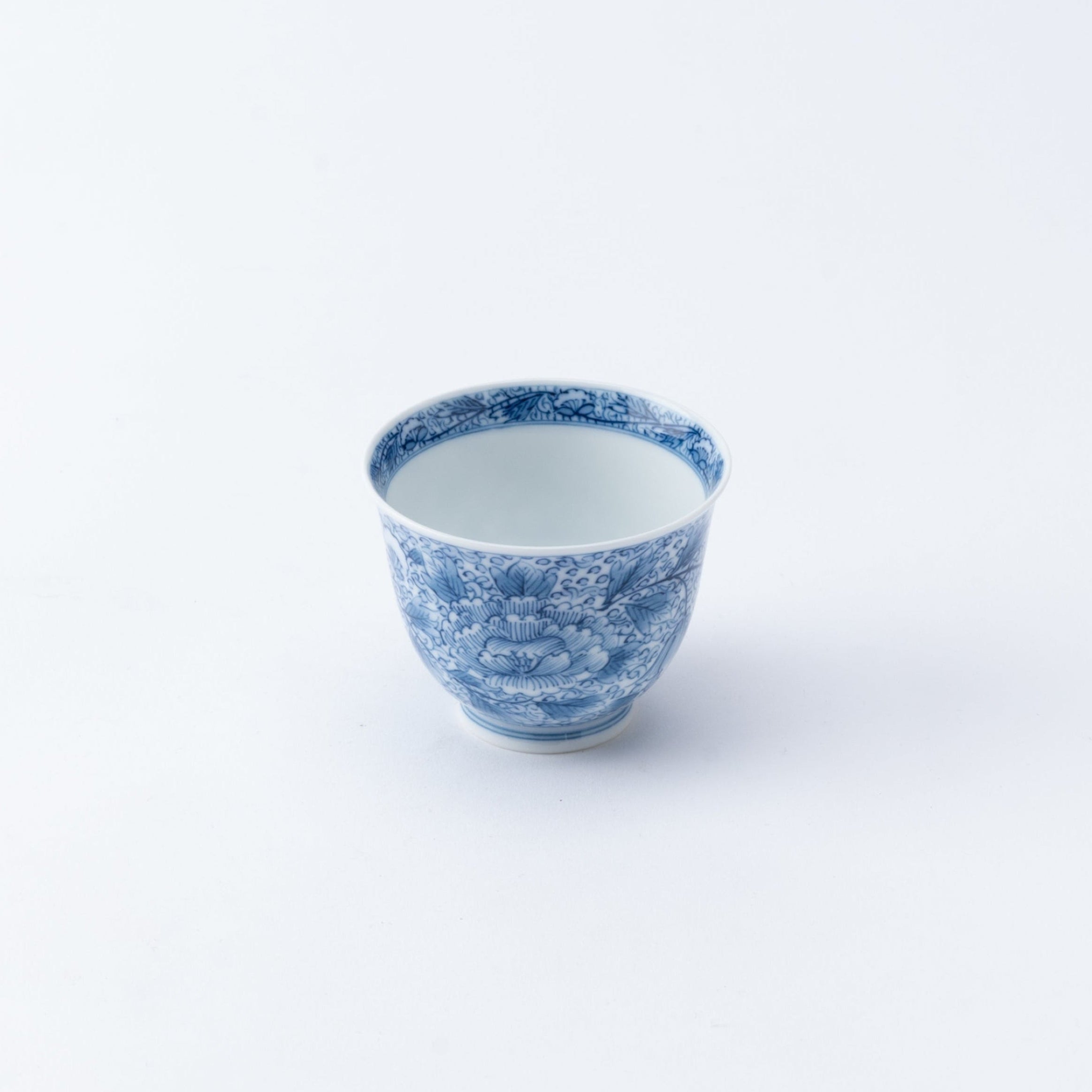
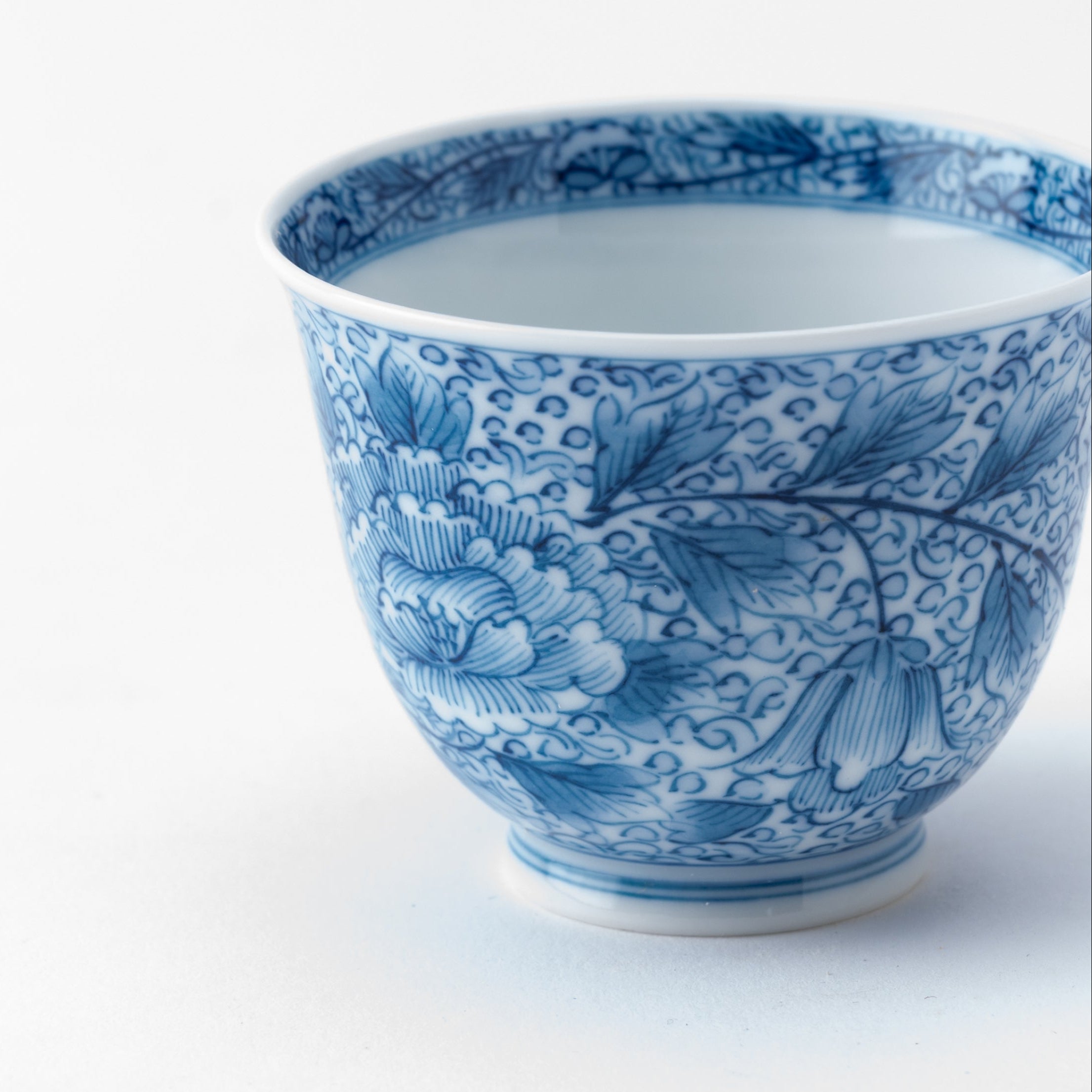
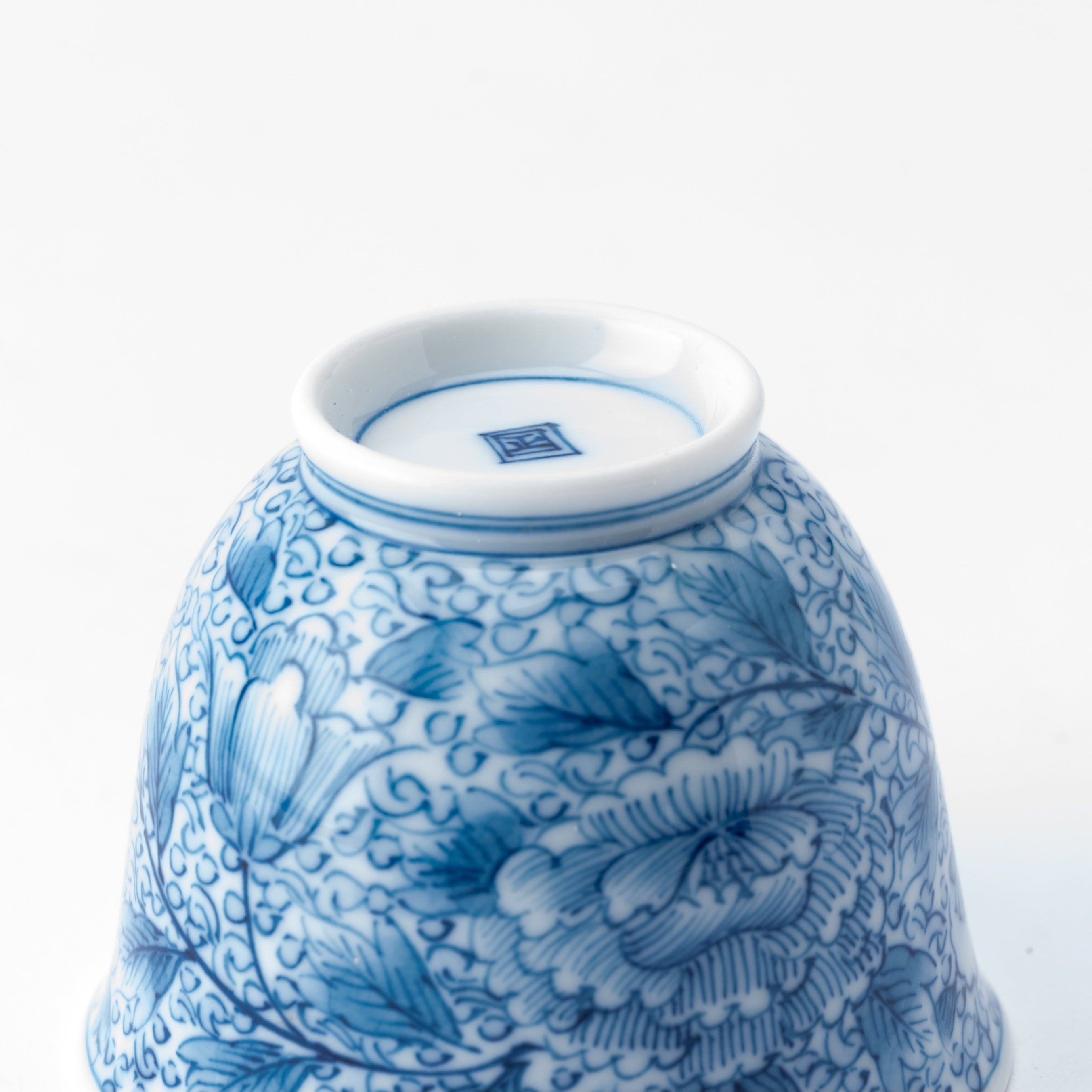
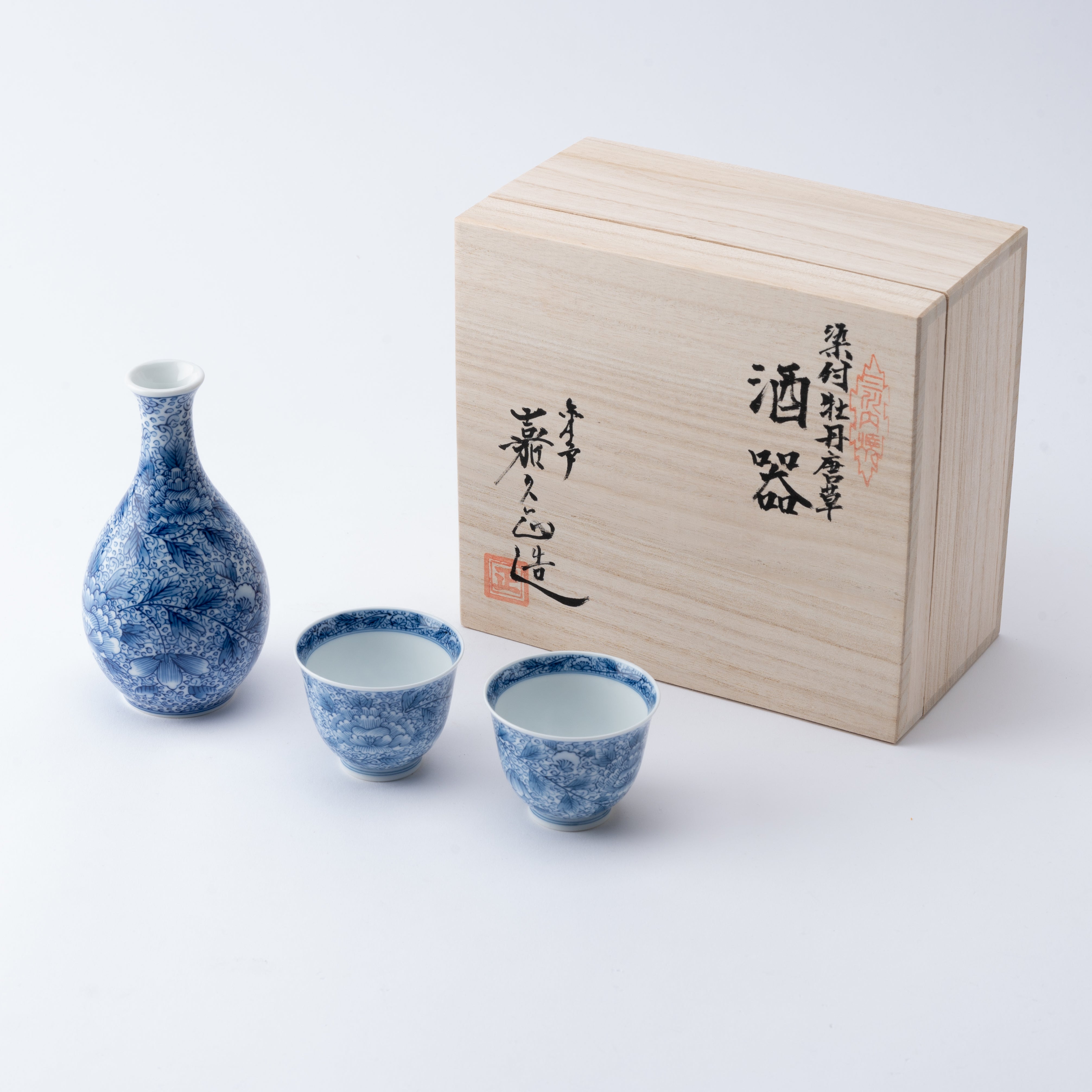
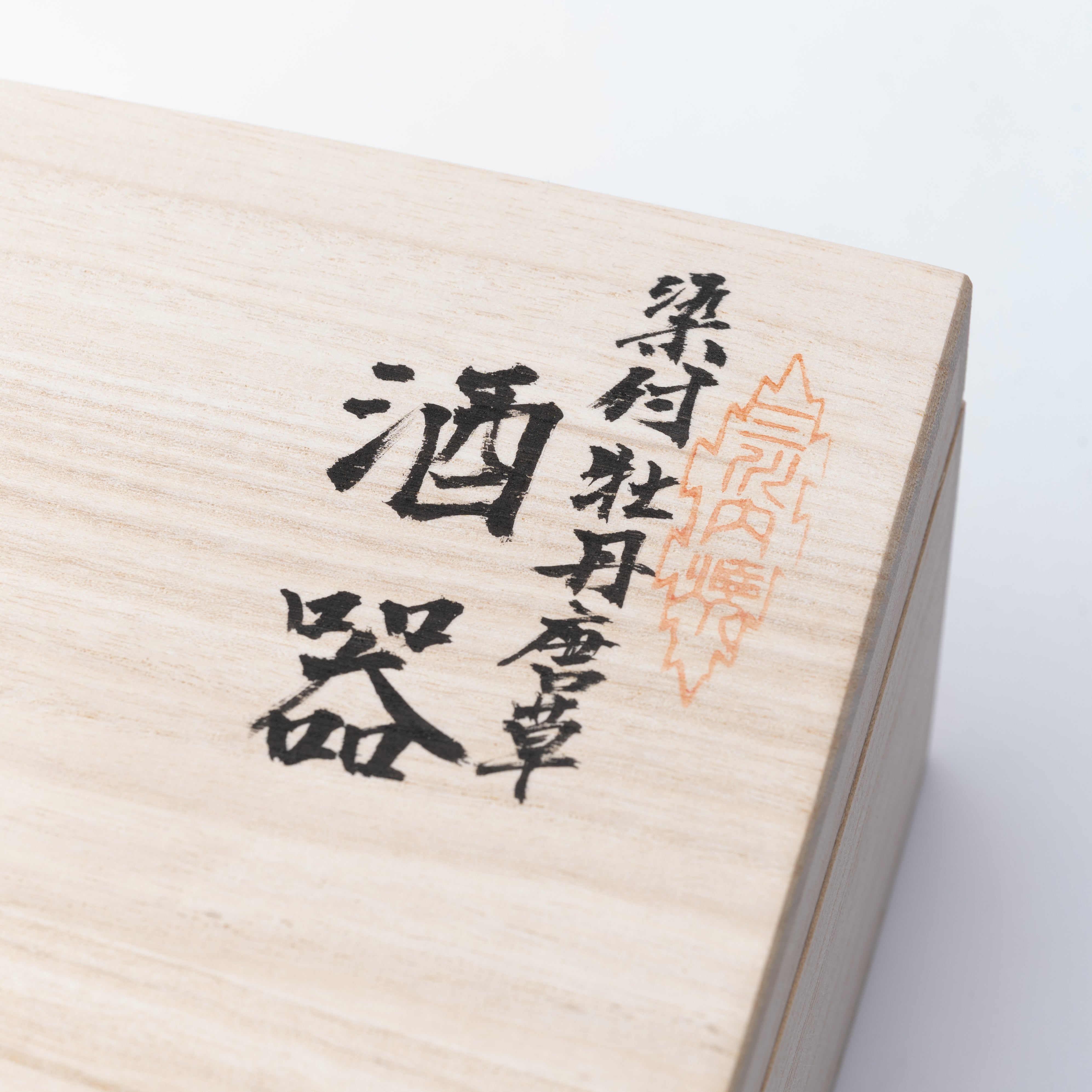
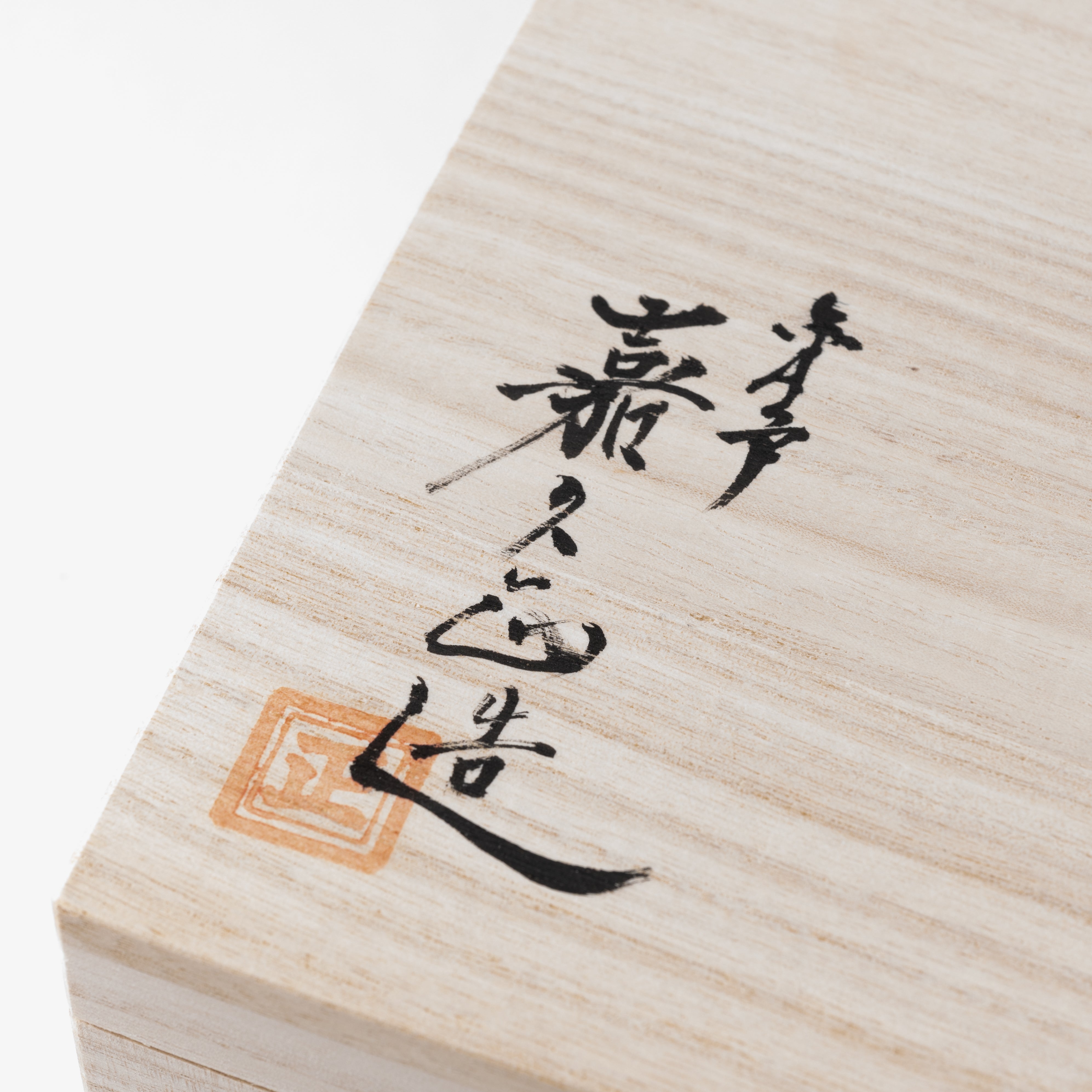
Juego de sake con estampado de peonías arabescas
Este juego de sake, bañado en delicados tonos y adornado con una meticulosa pincelada, encarna la visión creativa de Satomi Toshitaka. Sobre el cuerpo blanco translúcido de la cerámica Mikawachi, aplica gosu—un pigmento índigo fundamental en el arte de algúntsuke—con un pincel más fino que un solo cabello, creando vasijas que irradian tanto herencia como serenidad.
Satomi emplea el famoso método de esmaltado sometsuke para elaborar este juego de sake. Pinta meticulosamente los motivos sobre la base bizcochada. tokkuri Jarra y tazas para sake. Este paso fundamental define la composición y prepara la superficie para el sombreado tonal posterior.
El uso que hace Satomi de tsukedami Demuestra su extraordinario control y sensibilidad para la forma. Con un pincel especialmente elaborado y de cerdas densas, carga el gosu y lo mantiene firme y horizontal, permitiendo que el color se impregne en el bizcocho como si lo vertiera. Debido a la alta absorción de la superficie, cada pincelada debe completarse con un solo movimiento ininterrumpido; solo así se logran las sutiles transiciones y el acabado pulido que definen su obra. Dominar esta técnica requiere no solo una mano precisa, sino también años de práctica dedicada.
La cerámica Mikawachi es famosa por su ligereza y translucidez, cualidades que realzan cada detalle pintado. Cada línea parece vibrar con vida, otorgando a las elegantes curvas de la jarra de sake y a los finos bordes de las tazas una armonía natural y espontánea. Aquí, la técnica centenaria se fusiona con la visión contemporánea, y el simple acto de servir sake se convierte en un momento de elegancia contemplativa, ideal para los aficionados que aprecian el ritual y el refinamiento.
DETAILS
| Quantity | 1 jarra de sake, 2 tazas |
| Size |
[Jarra de sake] D 7,0 cm (2,8 pulgadas) x H 13,0 cm (5,1 pulgadas) [Tamaño de la abertura] D 2,5 cm (1,0 pulg.) [Taza de sake] D 6,0 cm (2,4 pulgadas) x H 5,0 cm (2,0 pulgadas) [Caja de madera] Largo 17,0 cm (6,7 pulgadas) x Ancho 19,0 cm (7,5 pulgadas) x Alto 10,0 cm (3,9 pulgadas) |
| Capacity | [Taza de sake] 40 ml (1,4 onzas líquidas) |
| Weight |
[Jarra de sake] 145 g (5,1 oz) [Taza de sake] 32 g (1,1 oz) |
| Material | Porcelana |
| Package Type | Caja de madera |
| Microwave | Sí |
| Dishwasher | No |
Maker / Brand
Satomi Toshitaka es el maestro de tercera generación de Kakusho Kiln. Descendiente de artesanos del horno que sirvieron en el dominio Hirado, continúa el legado de 350 años del horno, especializándose en la pintura a mano. algúntsuke Esto define la cerámica Mikawachi.
Satomi se mantiene fiel a la tradición de tratar cada pieza como una obra de arte única, a la vez que adopta la sensibilidad del diseño contemporáneo. Además, se dedica a la recuperación de la vajilla refinada de las eras Meiji (1868-1912 d. C.) y Taisho (1912-1926 d. C.), preservando y reinterpretando técnicas históricas para la actualidad.

Crafts
Artículos de cerámica Mikawachi
La cerámica Mikawachi, también conocida como cerámica Hirado, es una cerámica elaborada en la ciudad de Sasebo, prefectura de Nagasaki, Japón. Conocida por su porcelana blanca translúcida, fue muy popular en Europa durante la expansión de la artesanía japonesa en Occidente en el siglo XX. La cerámica Mikawachi destaca por sus delicadas técnicas de modelado que trascienden los límites de la porcelana, como el calado y el tallado en relieve, y por su hermosa pintura que parece una obra de arte única.
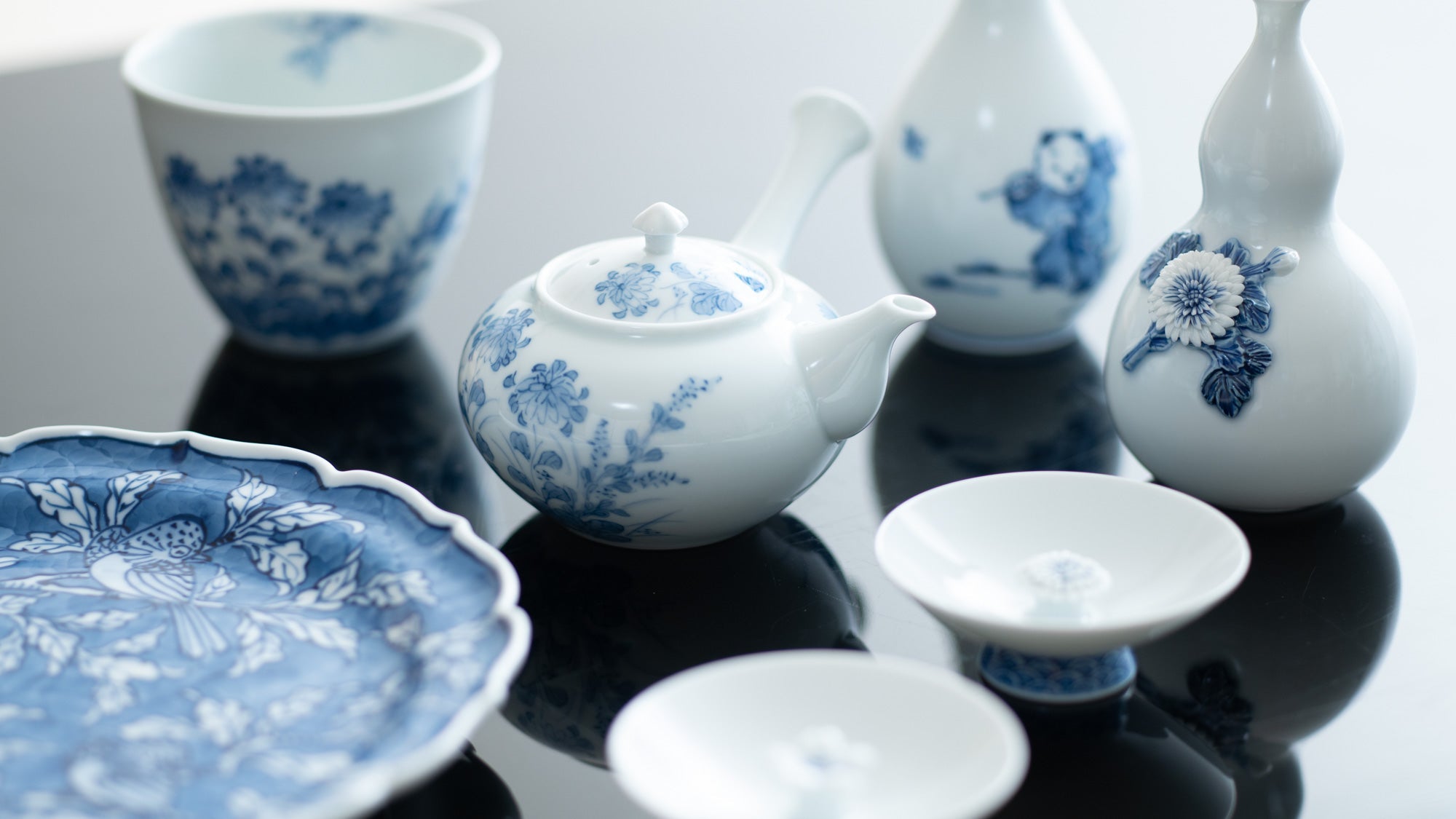
Elige opciones
About Artist
Galería Musubi
Desde sus inicios, MUSUBI KILN se ha esforzado por presentar al mundo las mejores artesanías tradicionales de maestros de todo Japón.
Aquí, en la Galería, buscamos exhibir las técnicas tradicionales más avanzadas, transmitidas de generación en generación. Podrá descubrir obras de maestros que no solo han perfeccionado estos métodos, sino que también han aportado su imaginación para innovar aún más el oficio.
Algunos de estos maestros incluso han sido nombrados Tesoros Nacionales Vivientes, un título que les otorgó el gobierno japonés para reconocer formalmente su contribución a la artesanía y la cultura, consolidando así su legado y convirtiéndolos en una parte importante de la historia del arte.
Cada pieza se elabora meticulosamente a mano durante muchos meses para crear un tesoro atemporal único. Y cuando esté en tu hogar, tú también formarás parte de esa historia.
Bienvenidos a la Galería. Les invitamos a explorarla con calma.
